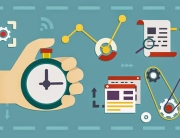18 selling techniques I learned selling energy contracts that you can apply to your everyday life
Living in London can be very expensive for students. So while I was studying, I sold energy contracts in shopping centers. In this article, I’ve listed all the sales tricks and tips I learned.
#1 There are 5 Steps to a Conversation
For every person, you meet there are five steps to a conversation.
1.Introduction
The introduction is crucial as we judge each other by first impressions. You only have five seconds to make an impression. During the introduction phase, you want to be Smiling , have great Eye contact , and be super Enthusiastic. It’s called the SEE factors. We naturally tend to mirror people’s expressions, so if you are good at these three things, people will also be enthusiastic about your product. It’s the mirror effect.
But first, it’s super important to that people notice that you’re happy. Therefore, while we had a sales event with the sales team, we would always look like we were busy and having fun. If you look like you are having the time of your life, people ask themselves: “Why are they so happy?”. It makes it easier to connect and talk to people.
2.Short Story
As soon as you manage to get people interested in what you have to say you need to tell them who you are, what you do, and why you are talking to them. And you have to be convincing!
Therefore, you must learn to fluctuate your voice, so you get them to register what you are saying.
And you don’t want to chase someone to tell them your story. Don’t want to show people that you need them, as it puts you in an inferior position. Rather, you should stand still and get people to come to you
3.Presentation
The energy contracts we sold were cheaper than our competitors. As this was our strongest selling point, we would get them greedy by showing them how much they could save.
Our techniques were to make a triple price breakdown comparison:
With us, you would only pay 10£ a week, compared to 50£ per month with our competitors, saving you a total of 120£ per year !!
See what I did here? I used the time to my advantage by comparing longer period to emphasize how much they would save. If I told people they would only save around 1,5£ per day, I don’t think they would have been interested.
4.Closing
Once we’d presented our three selling points, we wanted to get our customers into a Yes mode. While continuing the conversation, you want to hear yes to close the deal. This is what we did:
Do you want, like everybody we signed up today, to have the best rates? Yes . Do you want to to save 120£ with us? Yes . Do you want to be guaranteed that the price won’t increase in the next 6 month? Yes .
See what I did there? I asked questions they couldn’t say no to. With my first question, I used what we call Jones factor: They want to have the best rates like everybody I signed up that day. When you were a child, typically you wanted what your brothers and sisters had…
We made sure always to keep eye contact while talking and asking questions. It builds trust. But as soon as I expected people to give me their credit card details, I would break eye contact until they would hand me their cards. It worked liked magic…
During the closing steps, we put great emphasis in trying to have a friendly conversation. Standing next to the customers instead of in front of him makes a big difference.
We would also be very careful with the words we were using. Basically was to be avoided at all means and replaced by obviously. We would always be using active verbs.
5.Consolidation
The consolidation phase happened once someone signed the contract. The consolidation phase was an opportunity to make sure people understood everything and to remind them of the CSF (critical success factor). We emphasized on their savings and reassuring them about what they’d just bought!
#2, Seven Great working habits
1. Have a great attitude
We emphasize on always being 100% positive. Whenever you’re not motivated, there is no point in selling. To get motivated again, we would simply take a quick break to get back on track.
2.Be on time
Remember that you are the only one in control of this.
3.Be prepared
We had some tablets that needed to be charged and documents to take. Make sure everything is ready.
4. Work a full day
Example: Every time I talk to a new client, I would be as enthusiastic as with the first person I talk to in the morning while I was full of energy.
5. Work your territory
Depending on where you are, there are always a way to take advantage your space.
6. Know why you’re here
Having clearly articulated goals for why you do things is a great motivation.
7. Take Control
You must always be in control of the situation. You must control:
- The place you pitch potential customers
- The conversation
- That no one will interfere with what you do
#3 Pitch Pace Attitude
Attitude will define 80% of the ability to sell when dealing with a new customer. What you say is merely 5% of what people look at. As a sales person, looking professional and clean is very important. People also look at the way you say things rather than what you say.
Having an excited voice will make it a lot easier to convince people. You want and need to talk to people’s emotions. Emotions first, then logic…
#4 What you say
As illustrated, your body language and your tone of voice tells more than the things you say. The emotions you create, and your body language is what makes people moving.
The second graph shows ECJ voice and flat voice. Try saying the following sentence with emphasizing on one word at the time. Notice how it completely changes the meaning of the phrase. Try to say it out loud:
I Never Said She Stole the Book (I never said it but someone else did)
I Never Said She Stole the Book (I don’t agree with the fact that she stole the book)
I Never Said She Stole the Book (I never said it even though I believe she did)
I Never Said She Stole the Book (I don’t think she was the one that stole the book)
I Never Said She Stole the Book (I don’t think she stole the book, I think she just borrowed it)
I Never Said She Stole the Book (I don’t think she stole the book, she stole something else)
#5 Play with Impulse factor
Impulse factors are impulses that causes people to buy.
1.Greed
People are always looking for more. It could be time, money, friends etc.. Greed is the most important factor. Without this impulse all the other impulses are weak.
When selling energy contracts, we used greed in different ways:
- Having fun: People want to have fun, so we had fun and created the need to have fun in people.
- Price comparison: We show how much they could save. We even asked what they would do with all that money.
- We asked if people received a letter from our competitors regarding an increase in price. (Energy prices increase every 6 months, so it was not hard to be right).
2. Sense of Urgency
When somebody decided to buy something, they usually want it now and fast. To trigger impulses even more to make people sign, I said:
“Unfortunately, I can’t change anything today but we can help you..”
3.Fear of loss
Fear of loss is much greater than the need for gain: For example people are usually more afraid of not getting the offer than getting the savings.
4.Jones Effect
He has it so I want it. It’s the theory that if many people have something, we also want it to “keep up” with them. In our conversations, we express this by saying:
- Have you heard about the price increase? Everybody I met today received the letter.
5.Indifference
Not interested? I want it even more. Have you never play catch me if you can with somebody you were attracted to? If you use indifference wisely, it can play a big role in making the sale.
We used this by telling people about our energy contracts, and then showing complete indifference by going back to our sales stands. We would then just hold a leaflet that they could take, and before they would take it and go away, we would start our conversation with them.
6.Power of suggestion
Barry Schwartz found out with the “Paradox of choice” that having too much choice leads to not choosing anything. The reason is that we become afraid to make a wrong choice.
It is often easier to be told what to do and not having to choose. When selling your product you might want to use that impulse and show that there is only one way to go forward.
#4 Law Of Average
We had some basic statistics we needed to fill out during the day. In order to make at least 3 sales per day, we created a table to define our goals. This is how we created our sale funnel:
| Stop | Come to the table | Qualify | Close | Applications |
| 100 people | 50 people | 20 people | 14 people | 3 applications |
The law of averages states that if you strictly follow the first goal you set yourself (here stopping 100 people), sales will also follow.
#5 Impulse Curve
This graph shows that you need to build up the impulses of your potential customers. The red line shows that you build up the impulse and that you are keeping it up by sending new impulses in your conversation. To keep it up :
- Meet level of excitement in every steps of the conversation.
- Make sure you emphasize keywords in your pitch.
#6 Bullet theory
Bullet theory is a system created to have a pre-definite answer to all kind of objections our potential customer could have. We did this to turn a potential yellow light into a green one.
When an objection occurs, use the small graph to know how to answer. First, you need to agree with your customer, then create an impulse, and come back to your original pitch.
Things to remember when there is an objection:
- Keep eye contact
- Keep Smiling
- ABC, always be closing qualifying customers
- Stay confident.
#7 Assumptive Language
The more you expect that your customers will buy, the easier it will be to sell. By assuming the sale, you project your potential customer that he will buy from you.
The way you can expect the sale is by telling your prospects: “What I have done for everyone today and what I will do for you”.
| Uncertain | Assumptive |
| What I could do / If that’s ok / If you want | What I will do / going to / Have been doing |
| Basically | Obviously |
| What you should | What you will |
| What I can | What I will |
#8 Buying Signs
Buying signs help you find customers that will most likely buy from you. You want to look for customers that are:
- Nodding
- Smiling
- Coming up to you to ask you any questions.
- Know about the product or service you are trying to sell
- Slow walkers, wondering around.
- Stops before you approach them.
- Asks questions, get interested.
- Raises their eyebrows = Face expression
#9, 10 Keys to success on Events
1) De-compartmentalize
Breaking your days into hours and having smaller, achievable objectives will help you reach your final goal. We would set a number of people we needed to talk to every hour.
If you write down how far you went in the sales funnel, you’ll get better in your pitch. For example if you’ve notice that you don’t manage to qualify anyone, it is a sign that you need improve yourself. Maybe you need to be more enthusiastic.
2) Retention
Use the statistics you’ve written down to check them every hour and see how you can improve. We use to be selling in teams, and would coach each other see how we could improve.
3) Create sheep factor
If you’ve found a very positive customer, make him interact with others so that he influence them positively. The opposite is true, if you are interacting with a very negative customers your goal will be to block this customer with potential new ones.
4) You are always on show
Check your appearance, look at yourself in the mirror, and make sure you always look good. Have your team mate telling you if they feel your attitude is down. If you find yourself having internal conversation or frowning it might be the time to take a break.
5) Don’t stare at your partner pitching
You want to avoid making customer uncomfortable.
6) Got to have fun on the event
The more fun you have at an event the easier it will be to do your job. Never hesitate to laugh and cheer with one another.
7) Creative intro’s makes you different
We had a pitch to follow, but once you are more comfortable, adapting your introduction depending on people is also a good tactic.
8) Look busy- no soldiers lined up waiting!
Standing and waiting for potential customer might only scare people away.
#10 Strategic Pause
When you talk to people you should make short deliberate pauses in your conversation. The purpose is to let people register what you say.
Strategic pauses are great after having created an impulse factor so customer can close themselves. You also make it feel like a conversation rather than a pitch. Pauses also allows you to feel your customer’s objections and give him the opportunity to give you feedback while you talk to him.
Alternatively it is also useful to create a personal connection with your clients. When we were talking with parents in malls, we would ask questions about their kids, how many they had, their names in order to build a connection with them.
You need to balance between Business and personal Rapport.
#11 Pre-emptive Strike
Knowing your customers and what they will be objecting on will help you close more sales.
Pre-empt consist of pre-empting possible objections. In our case people usually needed to discuss with partners so we pre-empting their objections:
I’m sure you would like to compare the prices with your partner? (pause) This is why we are giving the next twelve days to decide whether or not you want to go ahead with the savings.
# 12 Controllable vs. Uncontrollable
There are some things you can control and some you can’t. Here is a list of controllable vs uncontrollable factors.
| Controllable | Uncontrollable |
| Arrive on time | Natural Disaster |
| Be prepared | Familly |
| My attitude | Weather |
| Work on my whole territory | Territory |
#13, SW3=N
Some will, Some won’t, so what?. It seems simple but when doing sales you learn to take NO’s hundred thousand of times. Learning to be indifferent can be helpfull.
#14 KISS Keep it short and Simple
KISS vs KILL (keep it long and lousy)
The KISS principles highlighted the fact the simplicity is key to pass a message and to go straight to the point. It also says that unnecessary complexity should be avoided.
# 15 SEE Smile Eye contact Excitement
- Keep Smiling, people have more empathy with those that smile.
- Keep eye contact unless asking for something like post code or bank details.
- Keep being excited about the product. The more excited you will be about the product the more excited the customer will be as well.
#16 Triple FFF
Triple FFF is used when your customer is giving an objection. Example:
FFF: I completely understand how you FEEL, lots of people have FELT the same way, but what they FOUND is that they had saved a lot by switching provider.
It worked like magic. I suggest you try next time you have an objection.
#17 Day Break Down
At the end of each day we would think back about our day. Writing down each point was also a way to see how much we evolve over time and could serve as a motivational tool. We were asking ourself:
- What did I learn today, From the atmosphere and from the field?
- Did I reach my goals of the day?
- The positive things I did today?
- The negative Things I did today?
- What are my goals for tomorrow?
#18 Setting goal for success
As salespersons, we are under great pressure to always perform better. To do so, we learn to set up goals for success. And we learn to set rules to achieve these goals. The rules are very simple and also very effective if applied:
- Set up a goal where you want to improve on
- Don’t focus on the end results, rather focus on the course of action to achieve the results. (In sales we set goals to talk to more people so we would qualify more and this would lead to more sales. Which is the opposite of focusing on results being sales)
- Make your goals SMART. Specific, Measurable, Assignable, Realistic, and Time-related.
Did you like this list of tips and tricks? We are preparing a track on how to become a successful salesperson. S ign up to our newsletter to stay updated!
Also we have a dedicated track to become a business development manager . Click to access.















Very well said.